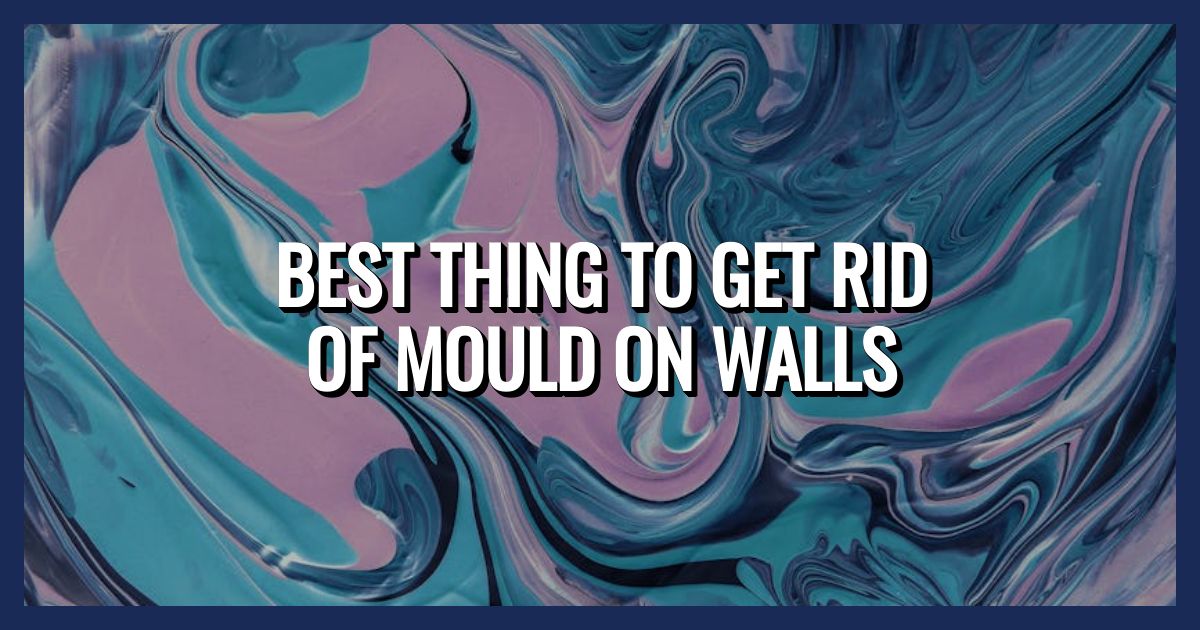How To Get Rid of Mould From Walls
Mould on walls is more than just an eyesore. It can affect your health, damage your property, and spread quickly if left unchecked. Addressing mould problems promptly is vital to keeping your home safe and comfortable. But what causes mould, and how can you effectively remove it? Here's everything you need to know.
Understanding Mould and Its Causes
Mould thrives in areas where moisture, warmth, and organic material combine. It might start with a small spot, but without action, it can spread fast. Knowing what triggers mould is the first step in tackling it.
Types of Mould Commonly Found on Walls
The three most common types of household mould include:
- Black mould (Stachybotrys chartarum): This is the one most people recognise. It's toxic and often grows in damp, humid areas, such as around leaks.
- Penicillium: Known for its powdery texture, this mould often appears in water-damaged spaces such as under wallpaper or carpets.
- Aspergillus: Found in various colours, aspergillus grows well in poorly ventilated spaces and can pose health risks.
Understanding which mould you're dealing with helps you choose the right removal method.
Environmental Factors Promoting Mould Growth
Certain conditions make mould more likely to thrive, including:
- High humidity: When relative humidity is above 60%, mould growth becomes more likely.
- Poor ventilation: Stale air allows moisture to linger, creating a welcoming space for mould.
- Water leaks: Unnoticed drips from pipes or roofs provide the perfect breeding ground.
Identifying and addressing these factors is important for both prevention and removal.
Effective Methods to Remove Mould from Walls
Now that you know what’s behind the mould, let’s tackle how to remove it. Whether you prefer commercial products or natural remedies, there’s a solution for everyone.
Using Commercial Mould Removers
Commercial mould removers are effective and easy to use. Many products on the market contain chemicals that kill mould on contact and prevent regrowth. Here are a few popular choices:
- HG Mould Spray: Known for its quick action and ease of use.
- Astonish Mould & Mildew Blaster: Affordable and highly rated.
- Dettol Mould & Mildew Remover: A trusted household brand that works well on stubborn cases.
Before using any product, follow the instructions carefully, and wear protective gear like gloves and a mask.
Natural Remedies for Mould Removal
If you’d rather avoid harsh chemicals, natural alternatives can be just as effective. These everyday items may already be in your cupboard:
- White vinegar: This acidic liquid kills up to 80% of mould species. Spray undiluted vinegar onto the mouldy wall, let it sit for an hour, and wipe it away.
- Baking soda: a mild and non-toxic option. Mix a teaspoon of baking soda with two cups of water, spray it on the affected area, scrub, and rinse.
- Tea tree oil: Though pricier, it’s natural and effective. Mix two teaspoons with a cup of water, spray on the mould, and leave it without rinsing.
These options are safe, eco-friendly, and great for small areas.
DIY Mould Removal Techniques
Fancy rolling up your sleeves? With household items and a bit of elbow grease, you can tackle the problem head-on.
Here’s a step-by-step guide:
- Protect yourself: Wear gloves, goggles, and a mask to avoid inhaling mould spores.
- Prepare the area: Open windows for ventilation and cover furniture or floors with plastic sheeting.
- Mix your solution: Combine one cup of bleach with four cups of water for a powerful cleaning mix.
- Scrub: Dip a scrub brush into the solution and clean the mouldy spot until it’s gone.
- Rinse and dry: Wash the area with clean water and dry it thoroughly.
This method works well for small to medium-sized areas but requires care to avoid spreading spores.
Preventing Mould Growth on Walls
Getting rid of mould is only half the battle.
To stop it from returning, prevention is key.
Managing Humidity Levels
Keeping your home’s humidity in check can make a big difference. Use a dehumidifier in high-moisture areas like bathrooms or basements. Monitor indoor humidity with a hygrometer, aiming for levels between 30% and 50%. Don’t forget to dry clothes outside or use a vented tumble dryer.
Proper Ventilation Techniques
Improved airflow can keep mould at bay. Here's how:
- Open windows regularly, especially in areas prone to dampness.
- Use extractor fans in kitchens and bathrooms.
- Rearrange furniture so it doesn’t block air circulation near walls.
Small changes can eliminate the stale air mould loves.
When to Call a Professional
Sometimes, mould problems go beyond what you can handle yourself. Knowing when to bring in the experts is crucial.
Signs of Serious Mould Infestation
Indicators of a severe problem include:
- Mould covering large areas (bigger than one square metre).
- A recurring growth that keeps coming back despite your efforts.
- A strong, musty smell that doesn’t go away.
These are signs the mould might have penetrated deeper, requiring expert help.
Professional Mould Remediation Services
When you call a professional, they’ll assess the problem, identify the mould type, and address the source. Services may include deep cleaning, anti-mould treatments, and structural repairs. While it costs more,
professional remediation ensures the problem is completely resolved.
Conclusion
Mould on walls can happen to anyone, but swift action makes all the difference. By understanding the causes, using effective removal methods, and taking preventative steps, you can keep your walls clean and healthy. In severe cases, don’t hesitate to consult a professional. Remember, mould isn’t just a cosmetic issue—it’s a matter of health and safety. Take charge and keep your home mould-free.

